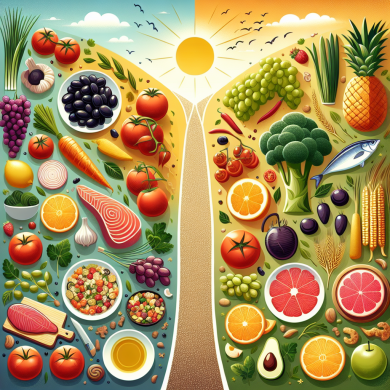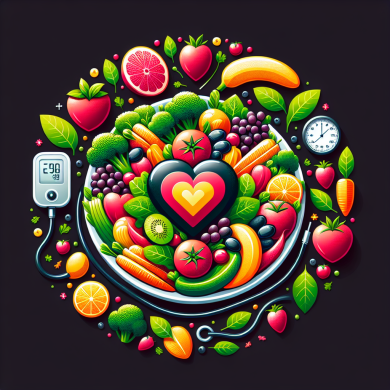Simple Tips to Slash Sodium Intake
“`html
Introduction
Sodium is an essential mineral that plays a crucial role in various bodily functions, including fluid balance, nerve transmission, and muscle contraction. However, excessive sodium intake can lead to adverse health effects, particularly an increased risk of hypertension, heart disease, and stroke. With the modern diet heavily reliant on processed foods, sodium consumption has skyrocketed, making it imperative to find ways to reduce intake for better health outcomes. This article will explore simple yet effective strategies to slash sodium intake, helping you maintain a healthier lifestyle.
Understanding Sodium and Its Sources
Before diving into tips for reducing sodium intake, it’s important to understand where sodium comes from in our diets. Sodium is naturally present in many foods, but the majority of sodium in the average diet comes from processed and packaged foods. Key sources include:
– **Processed and Prepared Foods:** These include canned soups, snacks, frozen meals, and processed meats like bacon and ham.
– **Restaurant and Fast Foods:** Meals from restaurants and fast-food chains often contain high levels of sodium for flavor and preservation.
– **Condiments and Sauces:** Soy sauce, ketchup, salad dressings, and other condiments can add significant amounts of sodium.
– **Breads and Cereals:** Even seemingly healthy options can be high in sodium.
The Health Implications of Excessive Sodium Intake
Consuming too much sodium is linked to several health issues. The most notable is hypertension, or high blood pressure, which is a major risk factor for cardiovascular diseases. Excess sodium can cause the body to retain water, increasing blood volume and, consequently, the pressure on blood vessel walls. This condition can lead to heart disease, stroke, and kidney damage over time. Additionally, high sodium intake may contribute to osteoporosis, stomach cancer, and obesity-related complications.
Simple Tips to Slash Sodium Intake
1. Read Nutrition Labels Carefully
One of the most effective ways to monitor sodium intake is by reading nutrition labels on food packaging. Look for the “sodium” section and aim for products with lower numbers. The American Heart Association recommends consuming no more than 2,300 milligrams of sodium per day, with an ideal limit of 1,500 milligrams for most adults. Opt for products labeled as “low-sodium” or “no added salt” to make better choices.
2. Cook More Meals at Home
Preparing meals at home gives you complete control over the ingredients, allowing you to manage sodium levels effectively. Use fresh ingredients and limit the use of processed foods. Cooking from scratch not only reduces sodium intake but also enhances the nutritional quality of your meals.
3. Use Herbs and Spices for Flavor
Instead of relying on salt to enhance the flavor of your dishes, experiment with herbs, spices, and other seasonings. Garlic, lemon juice, vinegar, black pepper, and herbs like basil, thyme, and rosemary can add depth and complexity without the need for additional sodium.
4. Opt for Fresh or Frozen Vegetables
While canned vegetables can be convenient, they often come with added sodium. Choose fresh or frozen vegetables instead, as they are usually sodium-free. If canned options are necessary, rinse them thoroughly under water to remove some of the sodium content.
5. Choose Unsalted Snacks
Snacking is a common way that sodium sneaks into the diet. Choose unsalted nuts, seeds, and popcorn as alternatives to salted versions. These options are not only lower in sodium but also offer healthy fats and other beneficial nutrients.
6. Be Cautious with Condiments
Condiments can be hidden sources of sodium. Use them sparingly and opt for low-sodium or sodium-free versions when available. Consider making your own dressings and sauces at home to better control the sodium content.
7. Reduce Intake of Processed Meats
Processed meats like ham, bacon, sausage, and deli meats are typically high in sodium due to the curing and preservation process. Limit their consumption and seek out low-sodium or nitrate-free alternatives when possible.
8. Choose Low-Sodium Dairy Products
Dairy products can also contribute to sodium intake. Opt for low-sodium cheese and choose plain yogurt over flavored varieties. Reading labels can help identify products with reduced sodium content.
9. Limit Fast Food Consumption
Fast food is notoriously high in sodium, so it’s best to limit its consumption. When eating out, request no or minimal salt, and choose dishes that are grilled, baked, or steamed rather than fried.
10. Increase Potassium Intake
Potassium can help counterbalance the effects of sodium on blood pressure. Incorporate potassium-rich foods like bananas, sweet potatoes, spinach, and avocados into your diet to promote heart health.
Conclusion
Reducing sodium intake is a crucial step towards improving overall health and preventing chronic conditions such as hypertension and heart disease. By implementing these simple strategies, you can take control of your sodium consumption and pave the way for a healthier lifestyle. Remember that small changes can lead to significant health benefits, and it all starts with being mindful of the choices you make each day. Embrace these tips, and you’ll be on your way to slashing sodium intake effectively and maintaining a balanced diet.
“`















Add comment